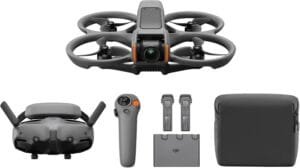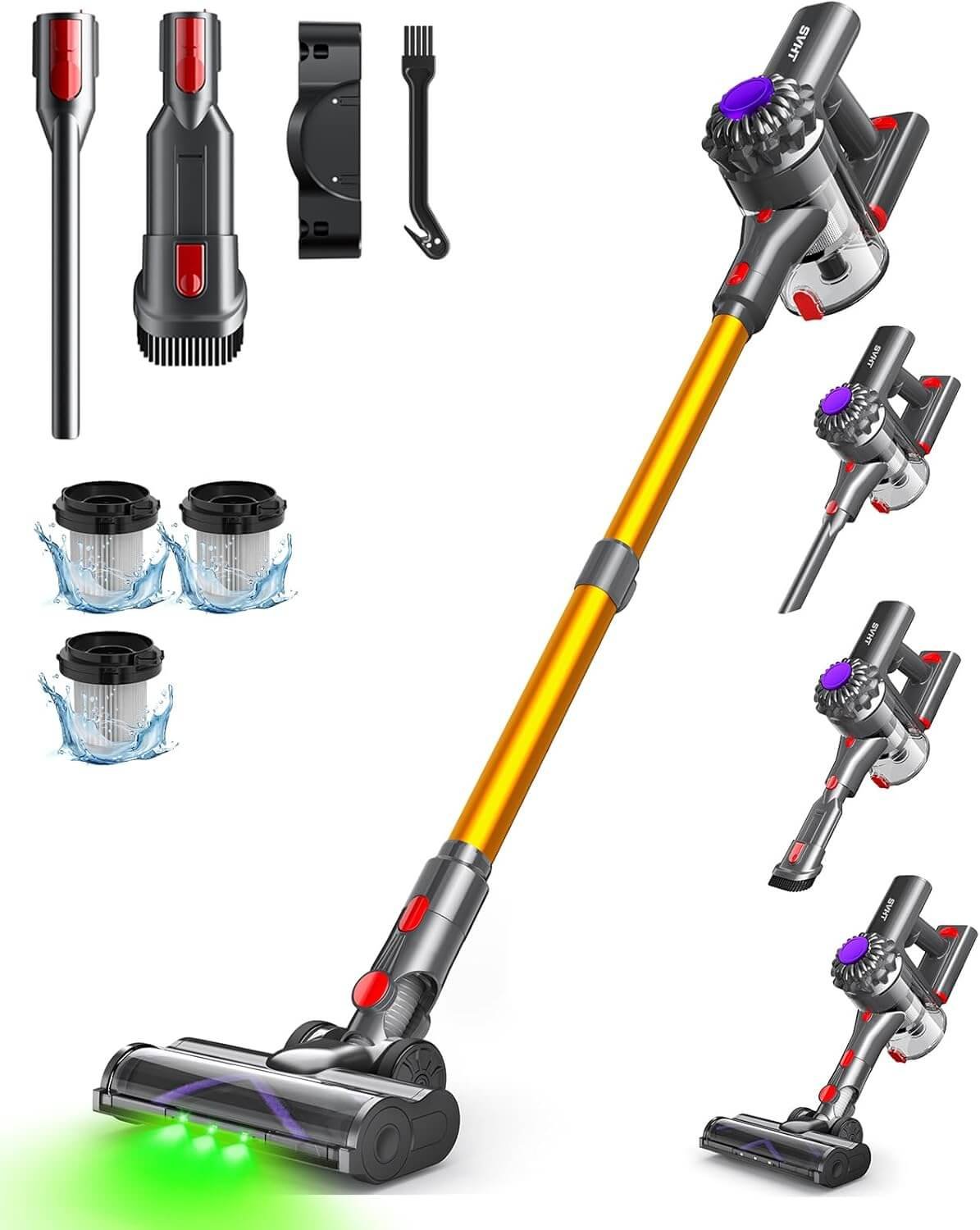Introduction to Dual-Camera Drones
Dual-camera drones represent a significant advancement in drone technology, offering enhanced capabilities compared to traditional single-camera models. Typically equipped with both an RGB camera and a thermal or multispectral sensor, these drones are designed to cater to a variety of applications, including aerial photography, surveying, and environmental monitoring. The dual-camera configuration facilitates the simultaneous capture of different data types, allowing users to obtain more comprehensive insights during their flight missions.
The emergence of dual-camera drones can be attributed to the rapid technological advancements in imaging and sensor technologies. As consumer demand for more sophisticated drone features has increased, manufacturers have responded by integrating dual-camera systems to appeal to both hobbyists and professional users. This development has not only broadened the functional scope of drones in the market but also helped bridge the gap between recreational flying and serious remote sensing applications.
For hobbyists, dual-camera drones offer the ability to capture stunning aerial images while simultaneously monitoring temperature variations or identifying vegetation health through thermal imaging. On the other hand, professional users, such as those in agriculture, construction, and emergency services, can leverage these drones for improved data collection, allowing for better decision-making in their respective fields. These features not only enhance the user experience but also provide valuable outputs that can be analyzed for various applications.
The rise in popularity of dual-camera drones reflects a broader trend within the drone industry, driven by the need for more advanced technologies to meet the diverse needs of users. As the market becomes increasingly saturated with options, understanding the benefits and innovations associated with dual-camera systems is essential for both prospective buyers and those keen on enhancing their drone operations.
The Popularity Surge: What’s Driving the Demand?
The demand for dual-camera drones has seen a remarkable surge in recent years, attributed to a confluence of factors that cater to an increasingly tech-savvy audience. One of the foremost contributors to this trend is the advancements in drone technology itself. Modern dual-camera drones are equipped with enhanced imaging capabilities, enabling users to capture high-definition aerial footage with unprecedented clarity. This capability not only enriches personal projects but is also appealing for professional applications in fields such as real estate, agriculture, and cinematography.
Affordability has also played a critical role in the rising popularity of these drones. As technology progresses, the cost of manufacturing dual-camera drones has decreased, making them more accessible to a broader audience. Brands now offer a range of models at varying price points, appealing to both casual hobbyists and serious professionals. This democratization of drone technology has fostered an enthusiastic community of users eager to explore the capabilities these devices offer.
Moreover, the influence of social media cannot be overstated. Platforms like Instagram and YouTube have elevated the visibility of drone photography and videography, prompting users to showcase high-quality content featuring stunning landscapes or innovative perspectives. Content creators often rely on dual-camera drones to add depth and creativity to their work, driving an increased desire among enthusiasts to purchase these technologically advanced devices. Hobbyist communities are not only sharing their experiences but also providing invaluable insights into the operational features and innovative uses of dual-camera drones.
In summary, the surge in popularity of dual-camera drones is driven by technological advancements, affordability, and a growing culture fueled by social media and content creation. This convergence has spurred consumer interest, leading to an unprecedented demand for these versatile aerial devices.
Benefits of Dual-Camera Drones
The advent of dual-camera drones has introduced a transformative element in numerous fields, offering significant advantages over traditional single-camera models. One of the most notable benefits is the enhancement of image and video quality. Dual-camera systems typically combine sensors with varying capabilities, enabling each to specialize in capturing specific aspects of a scene, such as color accuracy or depth perception. This results in richer, high-definition imagery that is essential for professional applications, including aerial photography and videography.
Furthermore, dual-camera drones provide versatile shooting angles. By utilizing two cameras simultaneously, operators can capture footage from different perspectives. This is especially beneficial in complex filming scenarios or when trying to document an event from multiple vantage points simultaneously. Such flexibility enriches the final output, making it more engaging and informative for viewers.
Stability is another crucial advantage offered by dual-camera systems. The combination of two cameras often includes advanced stabilization features that mitigate the effects of drone vibrations, ensuring steady and clear captures. This feature is imperative in high-stakes situations, such as search and rescue missions, where precise and stable imagery can significantly impact decision-making and operational efficiency.
Different industries are increasingly leveraging these advantages of dual-camera drones for various applications. In mapping and surveying, they provide detailed 3D models that can enhance land assessments and construction planning. Similarly, in inspection work, industries such as energy and agriculture benefit from the ability to monitor equipment and crops effectively, providing detailed visuals that aid in maintenance and yield improvement. Overall, dual-camera drones stand out in their capacity to deliver superior performance across a range of tasks, validating their rising prominence in the drone market.
Addressing Privacy Concerns
The emergence of dual-camera drones has undeniably brought remarkable advancements in technology and innovation. However, it has simultaneously sparked significant discourse surrounding privacy and surveillance issues. The dual-camera system, which enables drones to capture high-resolution images and videos from various angles, raises questions about unauthorized surveillance and encroachment on personal privacy. As these flying devices become increasingly capable and accessible, the balance between leveraging innovative technology and upholding individual privacy rights becomes paramount.
Public sentiment plays an essential role in shaping the discourse around privacy concerns. Many individuals express unease about the potential for intrusive surveillance by both private operators and governments. Incidents of drones recording people without their consent have heightened these fears, leading to widespread calls for stricter regulations aimed at governing drone operations. An effective regulatory framework could include measures that dictate where and how dual-camera drones can operate, particularly in densely populated areas and near private properties.
In response to these concerns, various laws and regulations have begun to emerge throughout different jurisdictions. For instance, the Federal Aviation Administration (FAA) in the United States has established guidelines that require drone operators to respect privacy rights. Similar regulations exist in other countries, underpinning the growing recognition of the need for ethical standards within the drone industry. These laws often emphasize the importance of maintaining transparency, such as notifying the public about drone flights in specific areas.
Ultimately, the ethical responsibilities of drone operators cannot be overlooked. It is crucial for operators to not only adhere to existing laws but also to consider the societal implications of their actions. This includes being mindful of the privacy of individuals and understanding the potential consequences of their surveillance activities. Engaging with the community and fostering a culture of responsible drone use can help mitigate privacy concerns while still embracing the innovative potential that dual-camera drones offer.
Real-world Applications of Dual-Camera Drones
The advent of dual-camera drones has significantly transformed various sectors, presenting innovative solutions that enhance operational efficiency and data accuracy. In agriculture, for instance, these drones are employed to monitor crop health. The dual cameras capture multi-spectral images that allow farmers to assess the conditions of their fields. By analyzing these images, they can identify problem areas, enabling targeted interventions that improve yield and reduce resource wastage.
In the realm of real estate, dual-camera drones have become invaluable tools for capturing high-quality aerial footage that showcases properties from unique perspectives. This capability provides potential buyers with an immersive experience, facilitating informed decision-making. Moreover, real estate agents utilize dual-camera drones to create stunning promotional materials, enhancing their marketing strategies and aiding in the sale process.
Filmmakers and content creators have also embraced dual-camera drones, which afford them the ability to achieve complex shots traditionally accomplished with multiple cameras. These drones allow for dynamic cinematography, making it possible to capture breathtaking visuals that elevate the storytelling experience. The versatility of dual-camera setups in cinematic applications fosters creative expression and opens new avenues for narrative exploration.
Furthermore, infrastructure inspection is another field benefiting from dual-camera drone technology. These drones are deployed to assess critical infrastructures, such as bridges and power lines, by capturing detailed images that reveal wear and tear or potential hazards. Such inspections not only increase safety but also minimize downtime, providing stakeholders with timely data for maintenance and repair planning. As the application of dual-camera drones continues to expand, the benefits they offer across diverse industries are becoming increasingly clear.
Comparing Dual-Camera Drones to Single-Camera Drones
In the rapidly growing market of aerial photography and videography, dual-camera drones are gaining significant traction. One primary distinction between dual-camera and single-camera drones lies in their cost. Typically, dual-camera drones come with a higher price tag due to the additional technology and capabilities they offer. This investment can be worthwhile for users seeking enhanced image quality and versatility in their capturing solutions, especially for professionals or serious hobbyists.
Performance is another critical factor to evaluate. Dual-camera drones often boast improved functionality by utilizing two distinct cameras for various purposes – for instance, one may be optimized for capturing high-resolution images, while the other may serve to capture wide-angle shots. This unique setup enables users to capture multiple perspectives simultaneously, thus providing greater creative freedom. In contrast, single-camera drones may be sufficient for casual use and basic aerial shots, but they do lack the versatility of dual-camera setups.
When it comes to versatility, dual-camera drones generally outperform their single-camera counterparts. A dual-camera setup allows operators to switch between different lenses or camera configurations, accommodating various shooting scenarios. This adaptability is particularly advantageous in professional settings, such as real estate photography, filmmaking, or surveying, where capturing diverse angles and detailed imagery is essential. On the other hand, single-camera drones are typically limited in function, making them better suited for simpler tasks.
Application scenarios also play a significant role in determining a user’s choice. For function-specific requirements, such as mapping or monitoring, single-camera drones may be adequate and more cost-effective. However, for those who prioritize content creation and storytelling through varied visual perspectives, dual-camera drones present a more compelling option, ultimately catering to more advanced imaging needs.
The Future of Dual-Camera Drones
The evolution of dual-camera drones is poised to greatly influence the landscape of aerial photography and videography in the coming years. As technological advancements continue to unfold, several emerging trends are likely to shape the future of this innovative technology. One key advancement anticipated is the integration of artificial intelligence (AI) within dual-camera systems. AI will enhance the functionalities of drones by enabling them to automatically adjust camera settings based on environmental conditions, optimize image quality, and even facilitate real-time editing capabilities.
Additionally, the miniaturization of camera components promises to improve the performance of dual-camera drones without sacrificing portability. As manufacturers develop lighter and more compact camera modules, users can expect drones that are easier to maneuver and transport. This convenience will likely attract a broader audience, including casual users and hobbyists, ultimately contributing to market growth in this sector.
The increasing demand for high-quality aerial content from various industries—such as real estate, film production, and agriculture—will further propel advancements in dual-camera technology. These demands may lead to the emergence of specialized drones tailored for specific applications, offering features like enhanced zoom capabilities and superior low-light performance. Consequently, such innovations will not only enhance the quality of captured footage but also diversify the market, catering to niche segments and professional users alike.
Moreover, the future of dual-camera drones is also intricately linked to the growing concerns around privacy and regulations. As governments draft laws to govern the use of drones, manufacturers will need to incorporate features that address these issues, such as geofencing capabilities and built-in data protection measures. This compliance will be essential in fostering user trust and ensuring that the technology remains not only innovative but also socially responsible.
Overall, the future of dual-camera drones appears promising, as continuous innovation opens doors to unparalleled opportunities in the fields of photography, videography, and beyond.
User Testimonials and Case Studies
Dual-camera drones have rapidly gained traction across various sectors, leading to numerous testimonials from users and industry experts alike. Many professionals have reported that these advanced drones enhance their workflow and produce high-quality imagery that wasn’t achievable with traditional single-camera setups. For instance, a real estate agent utilizing dual-camera drones for aerial property photography noted a marked increase in client interest. The ability to capture detailed images from multiple perspectives allows potential buyers to enjoy a comprehensive view of the property, ultimately aiding in quicker sales.
In another case study, a team of environmental researchers adopted dual-camera drones for wildlife monitoring. By employing both a standard camera and a thermal imaging sensor, they effectively tracked animal movements and behavior patterns with unprecedented accuracy. The diverse data collected ensured that their analysis was rich and multi-dimensional, proving essential for their conservation efforts. The researchers praised the enhanced capabilities and versatility that dual-camera technology offered, stating it allowed them to gather valuable insights previously unattainable.
Furthermore, hobbyists have also expressed their enthusiasm about dual-camera drones, particularly in aerial photography and videography. Aerial videographers highlighted how dual-camera setups enable them to film breathtaking landscapes and dynamic action shots while maintaining the quality and detail of the images. The ability to switch between cameras provides creative options that elevate the overall production value of their work. User feedback often emphasizes the innovative nature of these drones, as they allow for creative expression without compromising quality.
Overall, the experiences shared by both professionals and hobbyists reflect the transformative impact dual-camera drones have made across various fields. As more individuals and organizations adopt this technology, the success stories will continue to grow, further embellishing the narrative surrounding dual-camera drone innovation.
Conclusion: Weighing Pros and Cons
The emergence of dual-camera drones has marked a significant advancement in aerial technology, offering users enhanced capabilities such as improved imaging and data collection. These drones, equipped with multiple cameras, allow for a richer, more nuanced understanding of aerial views, offering applications that span from professional photography and cinematography to infrastructure inspection and environmental monitoring. The benefits of this innovation are evident in the realm of commercial use and creative industries, where enhanced visual quality and expanded functionalities can lead to better outputs.
However, the rise of dual-camera drones has also brought forth considerable privacy concerns. The ability of these devices to capture high-resolution images and video from extensive altitudes raises critical questions about surveillance and the right to privacy. There is a growing apprehension among individuals regarding unsolicited monitoring and data collection, prompting discussions about the ethical implications of utilizing such technology. Many fear that without proper regulations, dual-camera drones could be misused, leading to invasive practices that infringe upon personal privacy.
Both sides present valid arguments, highlighting the need for a balanced approach. As dual-camera drone technology continues to develop and proliferate, there is an urgent requirement for effective regulation to safeguard public privacy while encouraging technological innovation. Stakeholders, including policymakers, manufacturers, and consumers, must collaborate to establish clear guidelines that promote responsible usage. Furthermore, consumer responsibility plays a pivotal role; drone operators should be educated about ethical considerations and the potential impact their activities may have on individuals and communities.
Ultimately, the conversation around dual-camera drones requires a comprehensive dialogue encompassing the benefits of innovation and the inherent risks associated with privacy. Readers are encouraged to share their thoughts on this evolving topic, contributing to a broader understanding of how society can effectively navigate these challenges.





















![Samsung Galaxy Buds 3 Pro AI True Wireless Bluetooth Earbuds, Noise Cancelling, Sound Optimization, Redesigned Comfort Fit, Silver [US Version, Amazon Exclusive, 2Yr Warranty]](https://product-reviews-today.com/wp-content/uploads/2025/07/Samsung-Galaxy-Buds.jpg)



